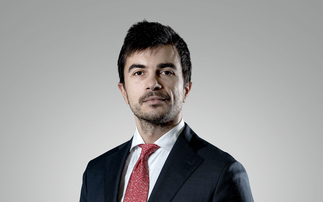We asked Martin Foden, Head of Credit Research, and Mike Fox, Head of Sustainable Investments, Royal London Asset Management, what makes sustainable fixed income different to the equity space - and why it matters
Is fixed income still playing catch up to equity in the sustainable space?
Mike: Fixed-income sustainable investing was slower to the party but the growth of interest is exponential. There is arguably no asset class where sustainability is more important to the risk decision. Get your investment decision right - small upside; get it wrong and you're potentially losing all your money. So the sustainability of companies' balance sheets, from a financial, environmental and social perspective, is vital.
Are there dangers from coat-tailing equity?
Martin: If sustainable fixed income simply mimics the approaches in the equity market, we'll miss the very nuances of credit analysis that can make it so rewarding. That's where the opportunities are for active investors: in amongst the nooks and crannies of credit markets.
For example, third-party equity-oriented ESG research coverage may not be more than 40% of a typical bond index. The missing 60% will be private companies; infrastructure and pension funds with long-dated assets to raise money against; social housing associations; and, importantly, the structures that issue asset-backed bonds. That's why it's so important to have a strong in-house ESG and sustainability capability at RLAM - we have to fill the gaps.
How you structure each piece of lending must drive the financial impact of sustainability risk?
Martin: Exactly, you need to be bottom-up and ask: "How are we taking that exposure to the company?" Different structures, and even different entities within the same company can face materially different risks. The fixed income team must evaluate how we dampen the impact of any latent environmental or social liability and ensure greater visibility and control over the money we lend, e.g. by lending on a heavily covenanted, secured basis.
For instance, simply acknowledging that different lending structures - unsecured, secured and securitised - will be impacted by poor management and governance in different ways represents a material step in making any sustainability analysis more credit specific.
You also need a joined-up sequence for decision making: in-house capability to identify environmental, social and governance risk through close collaboration with the fixed-income team. The team can then evaluate how risk transmits through the balance sheet, required yield compensation and portfolio positioning - all from a more informed basis.
Click here to read how RLAM's thinking informs practical credit decisions and helps identify potential opportunities
For professional clients only, not suitable for retail investors. The views expressed are those of Royal London Asset Management and do not constitute financial advice. Past performance is not a guide to future performance. The value of investments and the income from them may go down as well as up and investors may not get back the amount originally invested. Unless otherwise stated, the information in this document has been derived from sources believed to be accurate as of October 2019. Information derived from sources other than Royal London Asset Management is believed to be reliable; however, we do not independently verify or guarantee its accuracy or validity. For more information on the fund or the risks of investing, please refer to the fund factsheet, Prospectus and Key Investor Information Document (KIID), available via the relevant Fund Information page on www.rlam.co.uk.
Issued November 2019 by Royal London Asset Management Limited, Firm Reference Number: 141665, registered in England and Wales number 2244297; The company is authorised and regulated by the Financial Conduct Authority. Royal London Asset Management is a subsidiary of The Royal London Mutual Insurance Society Limited, registered in England and Wales number 99064. Registered Office: 55 Gracechurch Street, London EC3V 0RL.











